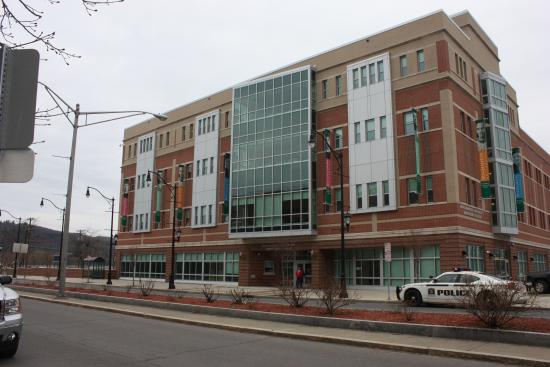
In 2005 and 2007 the Public Archaeology Facility excavated a block in Downtown Binghamton. These excavations occurred prior to the construction of Binghamton University's Downtown Academic Center, which is now located in this area.
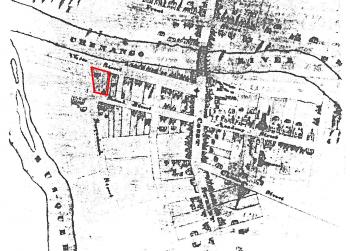
This block is bounded by two of Binghamton's earliest streets-- Washington and Water
Streets-- and was one of the earliest residential areas. It is shown here on the 1825
J.C. Moore map of Binghamton.
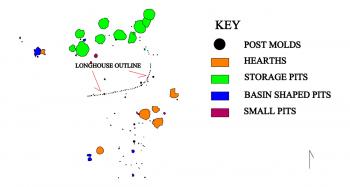
The confluence of the Chenango and Susquehanna Rivers has been an important landscape
feature for thousands of years. During our excavations, we identified artifacts, hearths,
and pits from Native American occupation of this area dating to nearly 5,000 years
ago. We also defined a more recent Longhouse occupation dating to A.D. 1000-1400.
This is depicted on the map which features a line of post molds where the posts that
formed the Longhouse walls have rotted in the ground leaving dark stains. We also
identified deep storage pits for grain and other agricultural products and a line
of hearths that may represent another Longhouse.
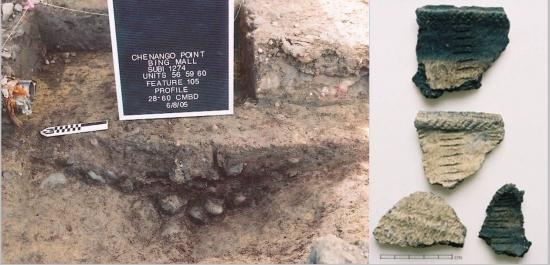
On the left is one of the hearths associated with the Longhouse. This is a bisection view where half of the hearth has been excavated to show the layers of rock, charcoal and soil that it is made up of. On the right are pottery sherds found in the hearth, probably from cooking pots that smashed over the fire.
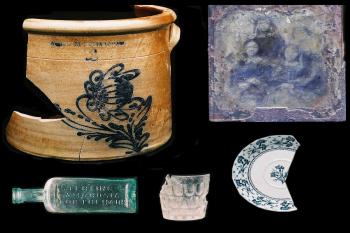
The 19th century Euro-American families who lived on this block were members of Binghamton’s
early elite. Historic censuses indicate that a lime-kiln owner, a flour mill owner,
merchants, and lawyers lived on this block during the 1800s. Residents included John
T. Doubleday and John R. Dickinson– brothers of two of Binghamton’s most prominent
early residents– and Dr. George Thayer, who served a term as Mayor of Binghamton.
Our excavations defined several of the 19th century house foundations, privies (outhouses),
cisterns, wells, carriage houses, and trash middens associated with these families.
Some of the artifacts recovered from the historic occupation are shown in this photo,
including a glass plate negative depicting four women.